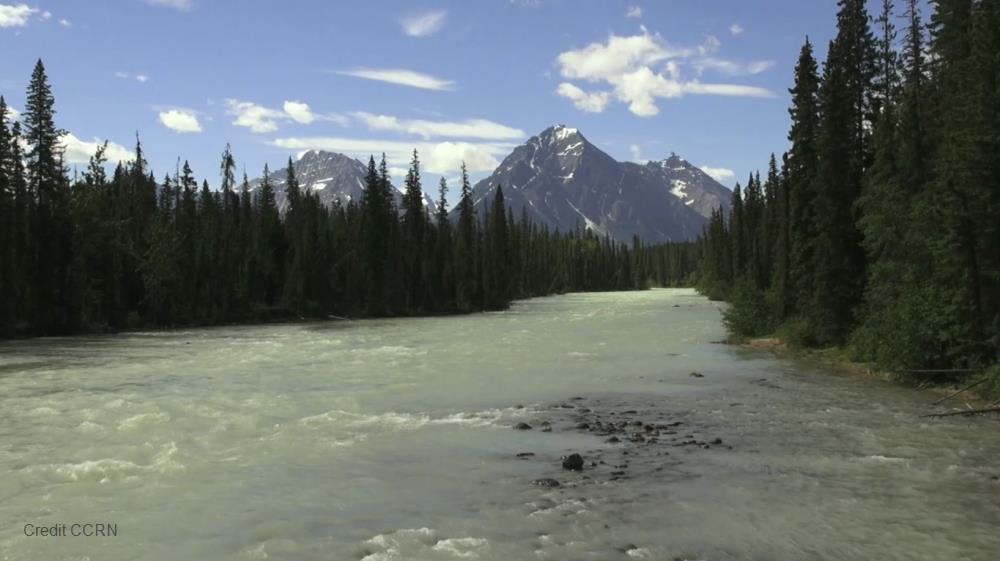
Related items loading ...
Section 1: Publication
Publication Type
Conference Presentation
Authorship
Grewal Arsh, Nicholls Erin, Carey Sean
Title
Assessing diel hydrochemical patterns in a permafrost underlain alpine catchment.
Year
2022
Publication Outlet
AOSM2022
DOI
ISBN
ISSN
Citation
Arsh Grewal, Erin Nicholls, Sean Carey (2022). Assessing diel hydrochemical patterns in a permafrost underlain alpine catchment.. Proceedings of the GWF Annual Open Science Meeting, May 16-18, 2022.
Abstract
Diel (24 hour) patterns in discharge, water temperature, and stream chemistry are ubiquitous in freshwater systems. Diel patterns in flow and stream chemistry are a function of radiation fluxes, antecedent precipitation, and the physical properties of the contributing area. Additionally, analyzing diel patterns of hydro-chemical data can inform processes of water storage and hydrologic connectivity. Baseflow diel patterns in discharge are primarily driven by evapotranspiration (ET) and/or snowmelt, however the specific timing can vary between catchments. Baseflow patterns of conductivity, pH, and cDOM are tightly correlated with the solar flux and are thought to be driven by instream photosynthetic activity. In contrast, discharge typically reaches minima/maxima about 6 hours after solar peak due to the accumulation of the ET/Snowmelt signal (Kirchner et al., 2020). Limited work has been conducted on evaluating diel patterns in permafrost underlain alpine headwater catchments. In this study, we use multiyear continuous discharge, stream chemistry, and radiation data to assess the timing and amplitude of diel hydrochemical patterns at Granger Creek, a subcatchment of the Wolf Creek Research Basin (WCRB) near Whitehorse, YT. Additionally, we asses changes in diel patterns throughout the ice-free season in Granger Ck and assess the role of cloud cover on the amplitude of diel patterns. Our results show that discharge minima occurs several hours earlier than more temperate catchments in the summer, due to the limited riparian area and high hydraulic conductivity. We observed SpC minima during solar noon in the summer, which indicates photosynthesis driving this pattern. However, coloured dissolved organic matter (cDOM) reached its minima during solar peak, which suggests photodegradation as a driver and not photosynthesis. These confounding patterns suggest that cDOM is not driven by photosynthesis, but SpC is. Additionally, only the amplitude of stream temperature appeared to be influenced by cloud cover. This indicates that the amplitude of summer diel patterns in discharge and stream chemistry are not directly influenced by the intensity of incoming solar radiation. These results indicate that diel patterns can be highly variable between catchments and can provide unique insights on stream chemistry, and the storage and transmission of water during baseflow.
Plain Language Summary
Section 2: Additional Information
Program Affiliations
Project Affiliations
Submitters
|
Arsh Grewal | Submitter/Presenter | akgrewal@mcmaster.ca | McMaster University |
Publication Stage
N/A
Theme
Hydrology and Terrestrial Ecosystems
Presentation Format
10-minute oral presentation
Additional Information
AOSM2022 Mountain Water Futures First Author: Arsh Grewal, McMaster University Additional Authors: Erin Nicholls, McMaster University; Sean Carey, McMaster University


 GWFNet
GWFNet Master
Master Data
Data Research
Research Map
Map
 Advanced
Advanced Tools
Tools
 . . .
. . .
 Metadata Editor
Metadata Editor
 Record List
Record List
 Alias List Editor
Alias List Editor
 Legacy sites
Legacy sites